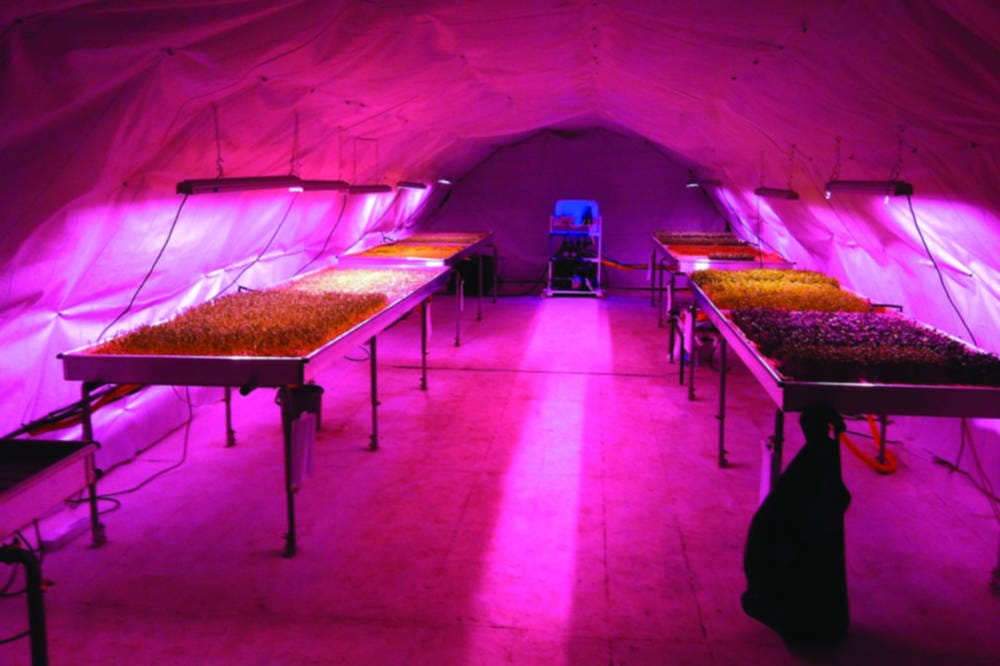Future of urban agriculture?
Felix Food looks where else our lettuce could come from

Space is an issue in a metropolis like London. Roads crowded with cars and pedestrians, with more and more skyscrapers popping up around the capital. As the population in the UK grows, estimated around 70 million by 2028 - many of whom will be living in and around the capital and the major cities, such as Birmingham and Manchester. With less land but more mouths to feed, what would our farms be in the future?
Going high
The idea of vertical farming is not exactly new; in fact, the concept first appeared in 1909, with the first built example in 1951 in Armenia. Since then, vertical farms have sprung up worldwide from Singapore to the UAE. Earlier this year in March, the world’s largest vertical farm was opened in Pennsylvania. Despite being single storey covering 3.25 hectares, it will house around 18 millions plants, with the help of six-level stacks, and this is quite easily scalable.
The concept of vertical farming is simple. Plants are lit by artificial lights, most probably LEDs since they are more energy efficient comparing to other technologies, and grown using soil-free hydroponic systems, feeding nutrients through using water. You can perhaps to think of it like a greenhouse, but the environment is even more controlled since the “sun” is powered by electricity.
As you can imagine, this method will not only help solve the problem of lack of space in cities, but also possibly increase the crop production since plants are stacked on top of each other, essentially increasing the area of “land” available. Not only that, similar to farming in a greenhouse, the crops can be yielded all year round given the controlled environment, the productivity of the surface is estimated to increase by a factor of 4 to 6 depending on the crop.
The “protected” environment will mean the impact of floods and famines will be decreased considerably and could also lead to the redundancy of pesticides, which would have polluted the environment if not properly treated.
However, there are also issues with this new way of farming - it is just not economical at the moment. With the extra cost of lighting and heating, it may not balance with the savings of transportation costs. Also, if the electricity used is generated by fossil fuels, this means the environment is even more damaged, however much energy efficient the farm might be. Some scientists are also worried about the potential light pollution it may cause when more and more of these structures are built.
Going underground
If buildings might be controversial, how about underground? The idea would just be the same, but just below our feet. Two entrepreneurs based in London thought of the same thing, and they have managed to transform a former WWII air raid shelter that is 33 metres under Clapham North tube station into a food garden. Currently micro-herbs and miniature vegetables are grown there, maintained with super low-energy LED bulbs powered by green energy.
Richard Ballard and Steven Dring believe an underground farm would be a profitable and sustainable business. Comparing to an actual building, the rent for the tunnel is just over £1 per square foot, which is really cheap even by student hall standards. Another advantage of growing in the tunnels is that the natural temperature there is around 16 degrees, which is ideal for growing a range of vegetables.
For now, the herbs grown at the farm will yield a large product - according to Steven, each square metre patch will generate £1,200 per year. This has gone well with the investors, mainly from crowdfunding websites. Currently the food is sold to wholesalers, but it might be on your supermarket shelves soon as production increases - Steven said Whole Foods may be seeking a partnership.
Is this the future?
It is hard to acknowledge the role of these farming methods in the future, as population increases and land becomes more and more in demand. However, not only we need to sort a business case out, a proper study will also be needed to look into the environmental aspect of the whole project. More so because hydroponic methods especially require a lot of water, and lights are required for 24/7 for the farms to reach full potential.









